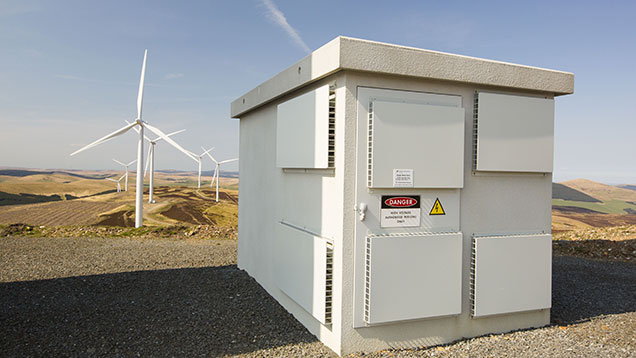Farms could lose out in low rents for electricity generator sites
 © Global Warming Images /Rex
© Global Warming Images /Rex Farmers with land next to electricity sub-stations could be losing out in thousands of pounds in rent from developers who install back-up generators on their land.
Recently there has been a renewed drive to find sites for diesel-powered generators, known as short-term operating reserves (Stor) and the National Grid has opened a new round of tenders with contracts to commence in August.
See also: Parties make wide range of green energy manifesto pledges
Stors act as a back-up for when electricity generation in a region is low or usage is high, particularly in areas that do not generate much electricity and have greater reliance on the national grid.
Landowners with land next to a sub-station can benefit from this by leasing their land, normally no more than one acre, to a developer who installs and runs the Stor.
Farmers lose money
However, there is a concern that many landowners are agreeing to much lower rents than they should be paid by developers.
Robert Paul, partner at Strutt & Parker, said most landowners with a Stor should be receiving between £40,000-£60,000 for one acre a year.
Yet he knew of one landowner who had agreed to £8,500/year and a developer who had agreed leases with 28 landowners for rents of £10,000/year.
On the face of it, the £8,500/year rent for an acre of Welsh hill land had seemed like a good deal to the farmer, said Mr Paul.
But when you considered that the developer would be getting a significant return on their investment, normally in the region of £5m for a 20MW Stor, it started to look less fair.
Each site was different, said Mr Robert, but generally landowners should be looking to get paid £3,000/mW of capacity a year.
Don’t weaken your bargaining power
Often landowners will make options agreements with developers.
This means the developer can spend the time and money applying for planning permission safe in the knowledge that if they get consent the landowner is guaranteed to rent their land to them.
However, landowners should be aware that if the developer applies for planning permission, the consent for a Stor is not transferable to another developer. This can leave the landowner in a weak bargaining position, said Mr Paul, because no other developer can make a better offer.
To avoid this, Mr Paul urged landowners to apply for consent themselves, with professional help, so that they hold the planning rights and can choose the developer who offers the best terms.
Small window
A small window of opportunity exist for landowners, as there is only a need for a certain number of Stor sites.
Landowners could promote their land to developers said Mr Paul, but he urged people to seek professional advice to ensure they received the maximum rent and the terms of the lease met their needs.
Quick guide to having a Stor on your land
What to consider when agreeing terms
- Be aware that permission for a Stor will be given to one developer, so you will be stuck with that one company once you have made an agreement.
- The developer must have insurance to cover any liabilities such as diesel spills and personal injuries and adequate management in place to minimise this risk and deal with any clean ups or other issues.
- You can ask for noise limits to be included in the terms.
- Rents should be index linked to RPI if you have agreed a decent rent. Otherwise, build in regular rent reviews.
- Developers will need access for construction.
How is a Stor constructed and what does it look like?
- Usually on no more than one acre.
- Top soil is scraped off to create an earth bun around the site.
- Fence constructed for safety.
- Concrete pad installed with two to three rows of diesel generators.
What happens once it is installed?
- Very little – may only runs for 5hr/year
- Developers will not be permanently on site as generators turn on automatically
- Not that noisy but limits on noise can be stipulated in lease term
Which areas are most in need of Stors?
The following areas produce little energy themselves or have high energy uses. Although it can vary each year.
- London
- South West
- South England in general
- East Midlands
- Yorkshire
